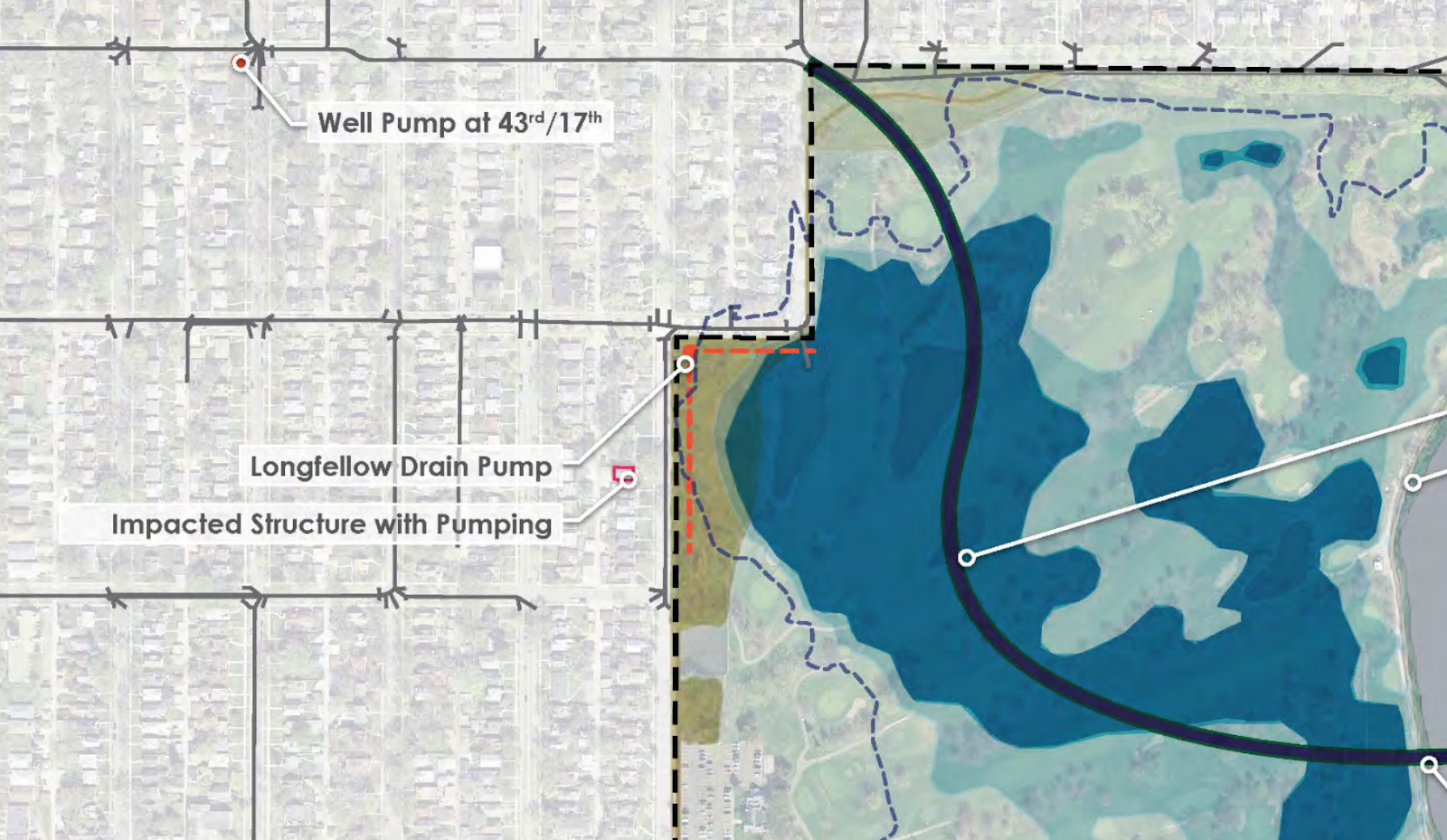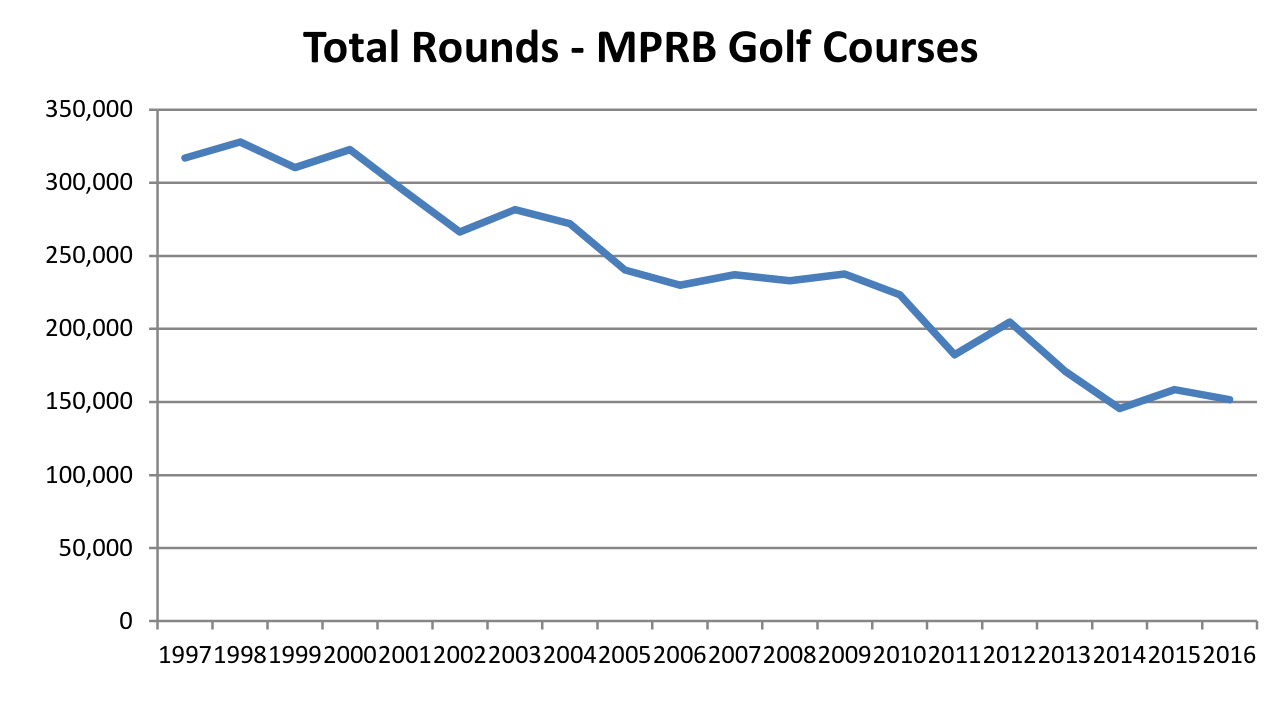Common myths about the Hiawatha Golf Course Area and proposed Master Plan
A lot of inaccurate information is present in public discussions concerning the future of Hiawatha Golf Course. To help cut through the noise, we’ve compiled some of the most common myths you might have heard about the golf course. If you are interested in learning more, look for links to in-depth documents at the bottom of each answer.
For even more myths in a shareable form, check out our extended myths document.
We have done our best to make sure that everything presented here is factual and supported by evidence. If you feel that we have gotten anything wrong, please contact us: info@hiawatha4all.com
MYTH: Dredging Lake Hiawatha will solve the water level issues
Dredging the lake can change the depth of the lake but cannot affect the water level of the top of the lake. The level of the lake is determined by groundwater levels and the level of the downstream bodies of water.
A dredged lake holds more water, but the surface of the water remains at the same level.
MYTH: Dredging the creek / removing the weirs will solve the water level issues
None of the weirs downstream of Lake Hiawatha are high enough to impact the water level of the lake. Dredging the creek could lower the level of the lake, but due to several sanitary sewer crossings under the creek, the most it’s possible to lower the creek is about 1 foot of elevation. This would have only a slight impact on pumping and flooding, and would require a cost-prohibitive amount of reconstruction, permitting, and coordination with other agencies.
MYTH: Reduced pumping will flood basements of nearby homes
The purpose of groundwater pumping at the golf course has always been to keep the golf course operational, but it had the unintentional side effect of artificially lowering the water table in the surrounding neighborhood, where some homes have basements too close to the water line. If all pumping ceased, an estimated 11-14 nearby basements would be at risk of groundwater intrusion during wet periods. However, by performing targeted pumping at two locations nearer to the affected homes, the existing level of protection for these homes can be maintained while still achieving an estimated 61-78% reduction in total pumping volume. The Master Plan includes this pumping scenario, and at no point has the Park Board moved forward with a plan that would put additional homes at risk.
Map of the proposed targeted pumping locations. The single impacted structure, a sport court, is already impacted under the current levels of pumping.
Read more in the Barr Engineering report
MYTH: There’s nothing wrong with the current pumping levels
Constant pumping of groundwater causes soil “subsidence”, or settling, which compacts the soil below the golf course. The more compacted the soil becomes, the less ability it has to retain groundwater, and the more pumping is needed to keep the course and neighboring homes dry.
With climate change forecasted to bring more frequent and wetter weather to Minneapolis, pumping needs will continue to rise just to keep the course above water.
“Even beyond the flooding in the summer of 2014, weather patterns produced seven years of rain in the last six years. The Minnesota Office of Climatology predicts these rainfall patterns to continue in the coming decades. This becomes important when comparing increases in the measured volume of pumped groundwater, which have increased from 242 million gallons in 2016 to more than 400 million gallons in 2019 and 333 million gallons in 2020.”
Ultimately, no amount of pumping can keep the golf course sustainable because pumping cannot prevent flood events from overflowing the berm, as happened in 2014. The golf course is a flood plain and no amount of pumping can change that. The “reduced pumping scenario” called for by the master plan would pump in a more targeted manner to prevent water intrusions in nearby neighborhoods and basements while reconstructing the golf course area itself to allow it to absorb large flood events.
MYTH: Hiawatha Golf Course turns a profit
Note: we have recently obtained audited financials through 2021, but this answer has not been updated.
It’s worth noting that many uses of public land do not generate revenue and are not expected to. However, proponents of the golf course often cite profitability as a reason to retain 18 holes and use the idea to exempt golf courses from scrutiny over what land use best serves the public good. So it’s worth examining whether the Hiawatha Golf Course makes money.
The answer is complicated, but in general, the Hiawatha Golf Course loses money. Audited financials from 2008-2017 show that Hiawatha lost money in 7 of the 10 years. Some of those losses were caused by the extended closures after the 2014 flooding, but the course also lost money prior to the flooding in 2011, 2012, and 2013. In total, Hiawatha Golf Course lost $1,986,049 over that 10 year period.
The COVID-19 pandemic sparked a surge of interest in golf, and city golf courses saw increased usage during 2020. The unaudited 2020 financials show net revenue at Hiawatha of $136,212. Audited financials are not available, but based on previous years we can estimate that the audited 2020 financials for Hiawatha would be somewhere around net zero.
For the golf course to sustain profitability, it would need to maintain or grow these activity levels after pandemic restrictions end. Golf participation has been declining nationwide and citywide for at least 20 years, and it seems unlikely that a brief surge of interest will be enough to reverse these trends over the long term.
Total annual rounds of golf for all MPRB golf courses. MPRB reported approximately 225,000 rounds in 2020, an activity level comparable to 2006-2010.



